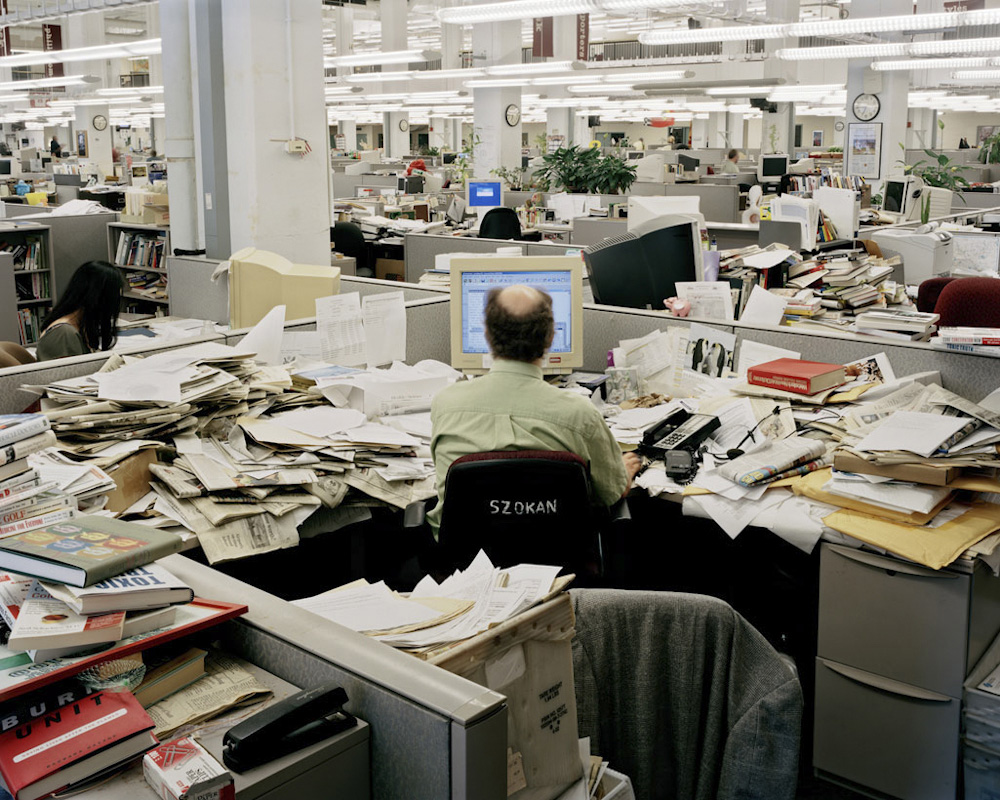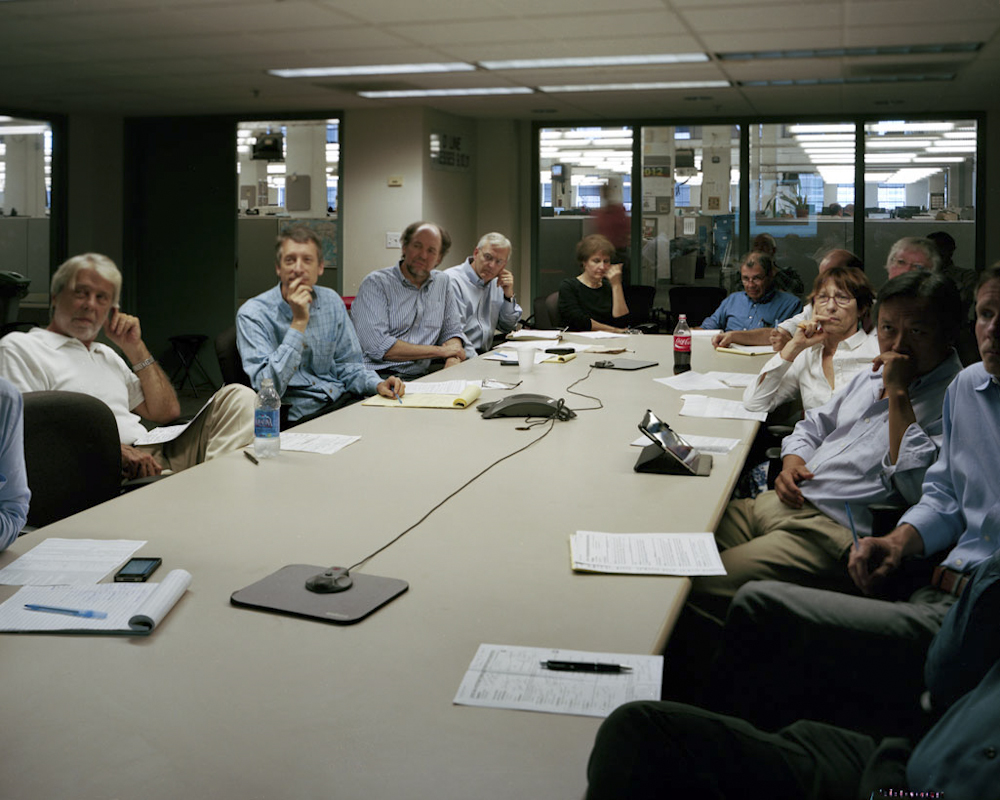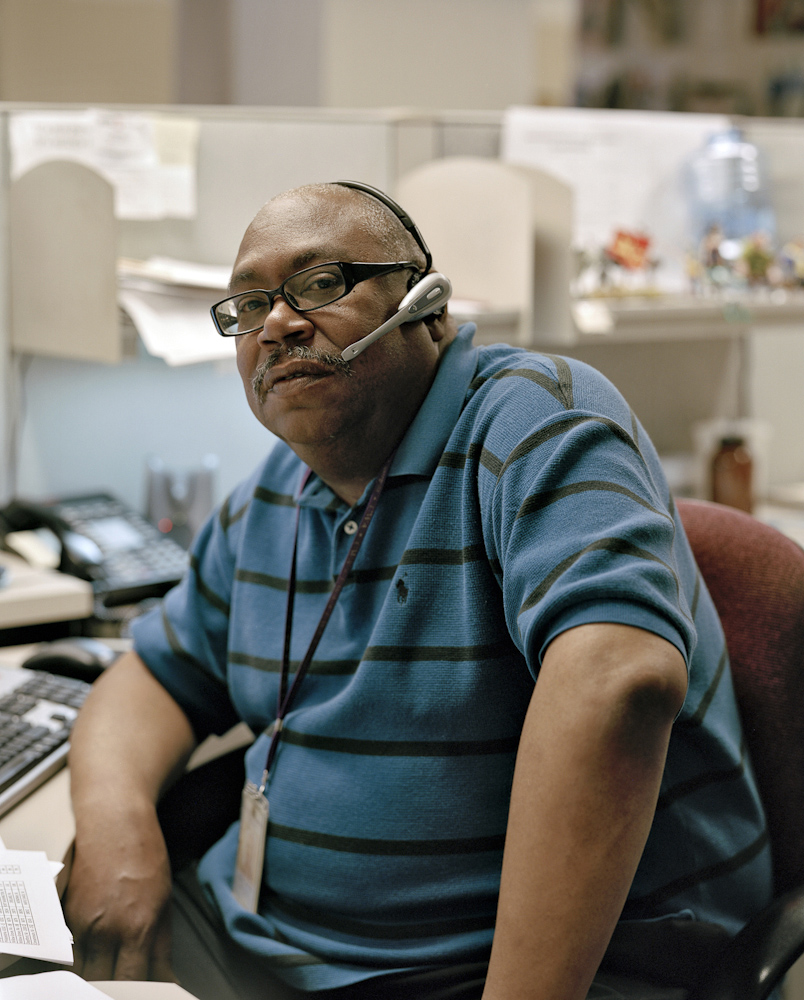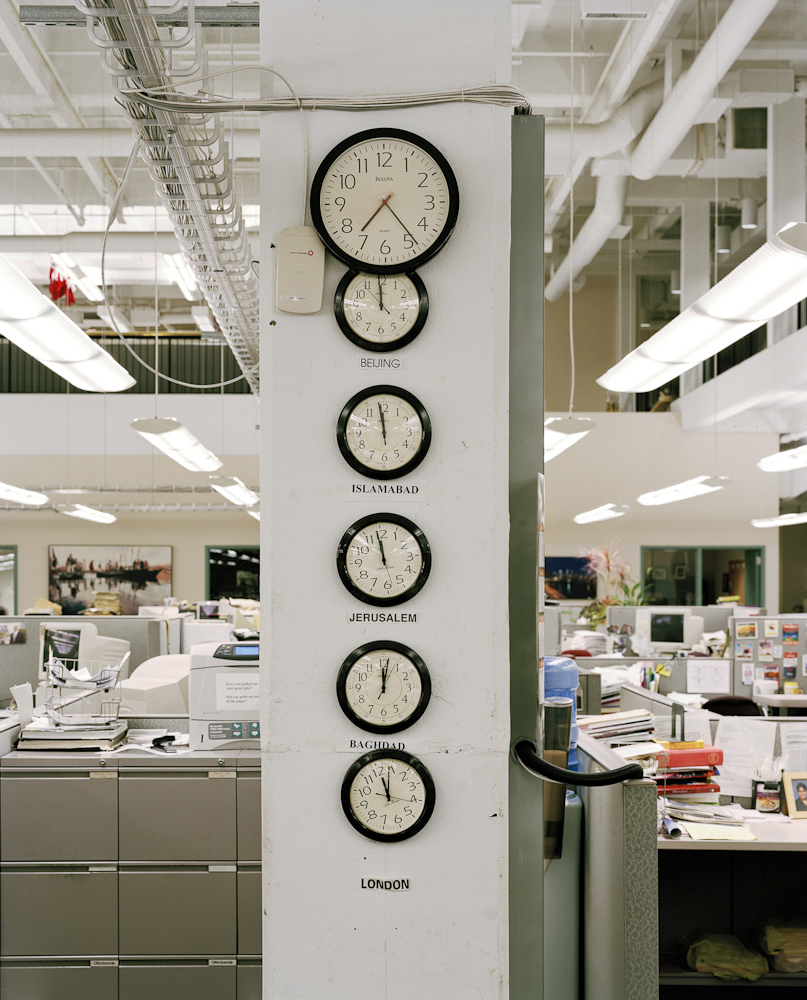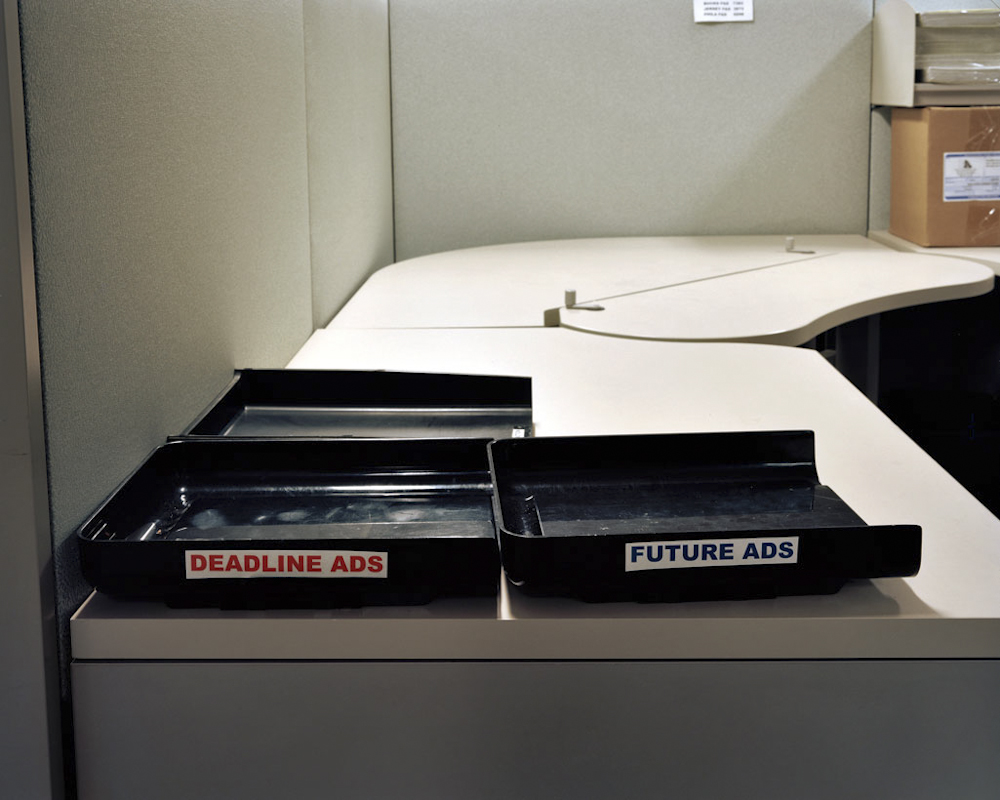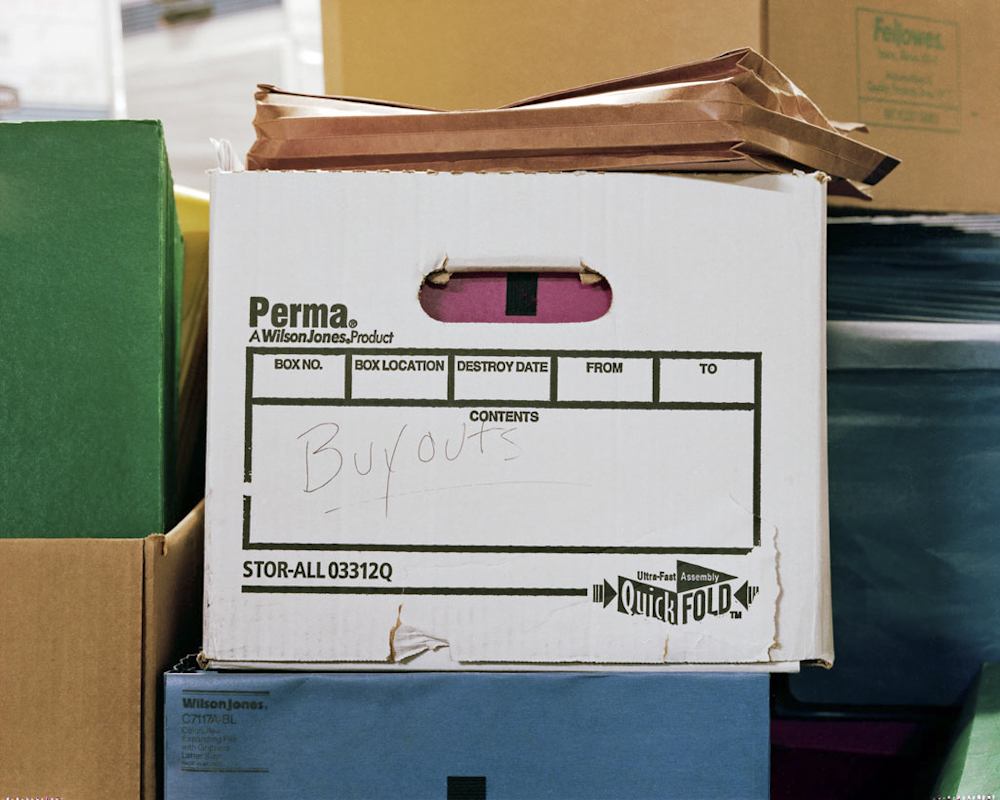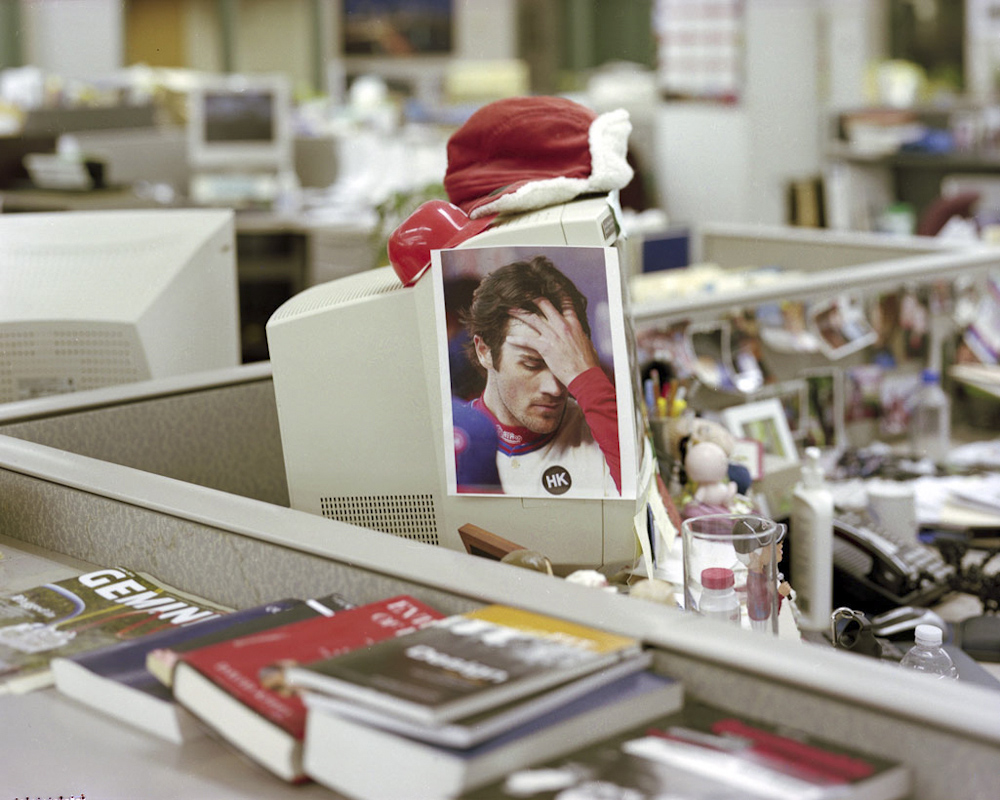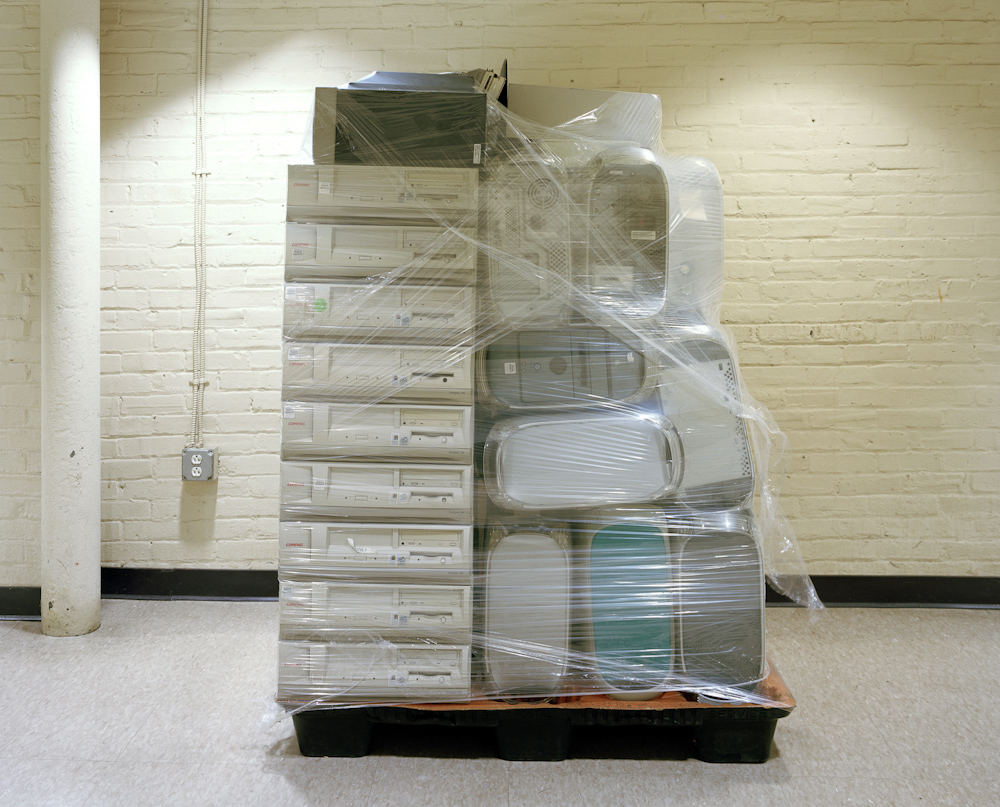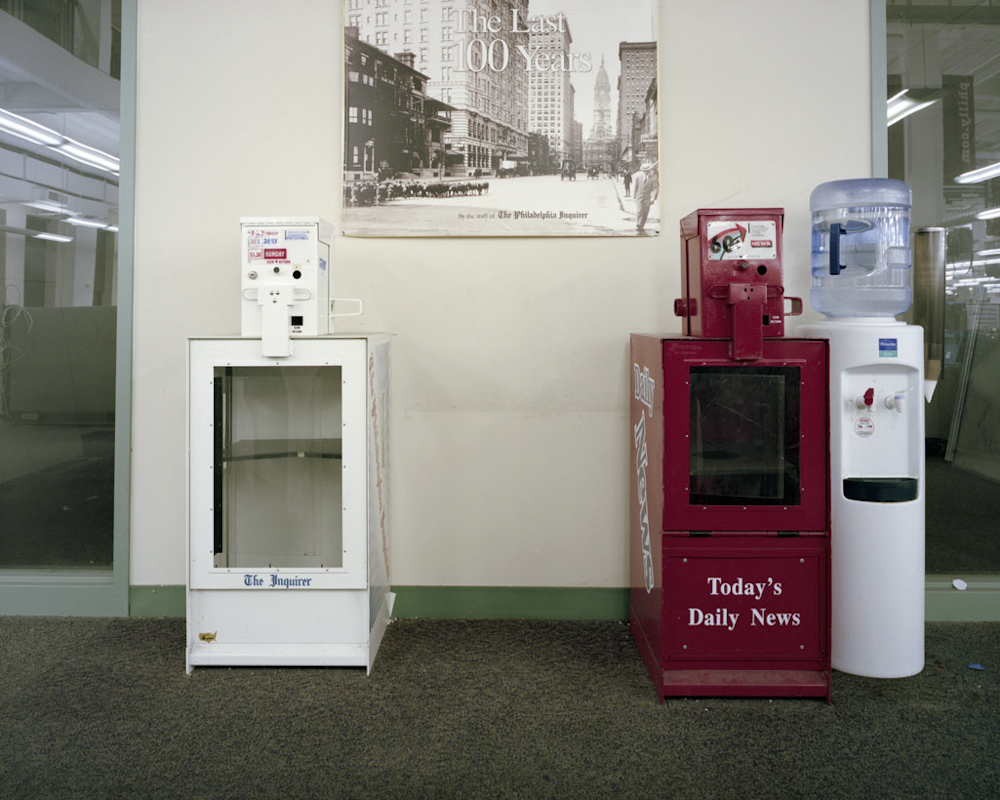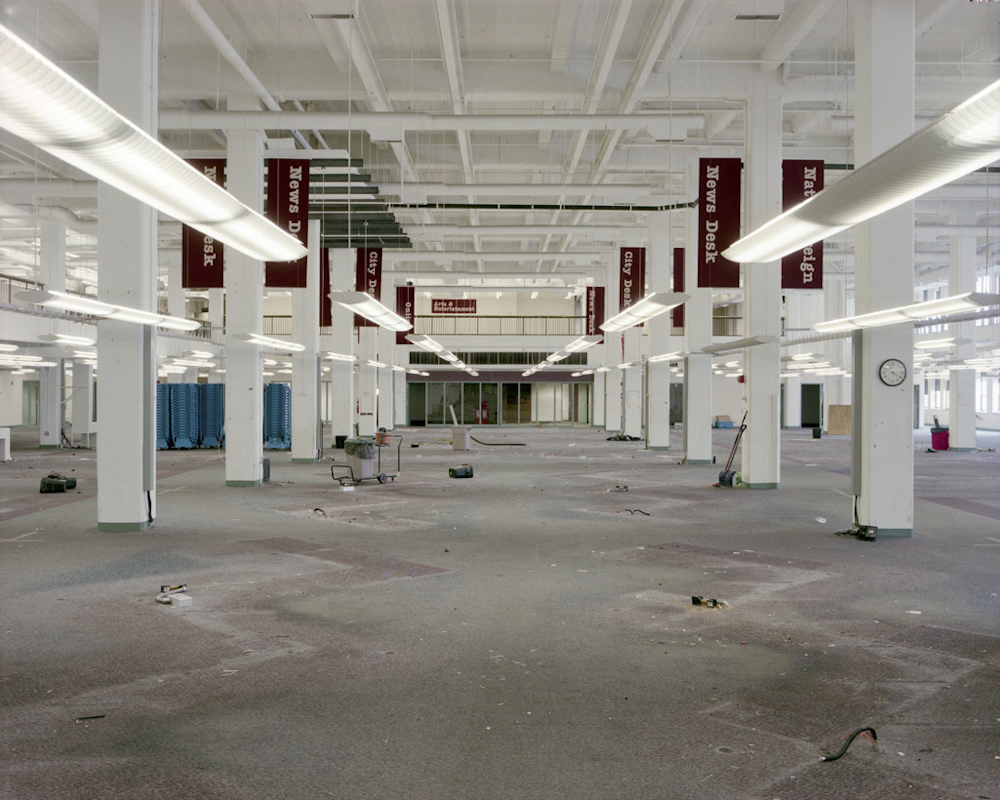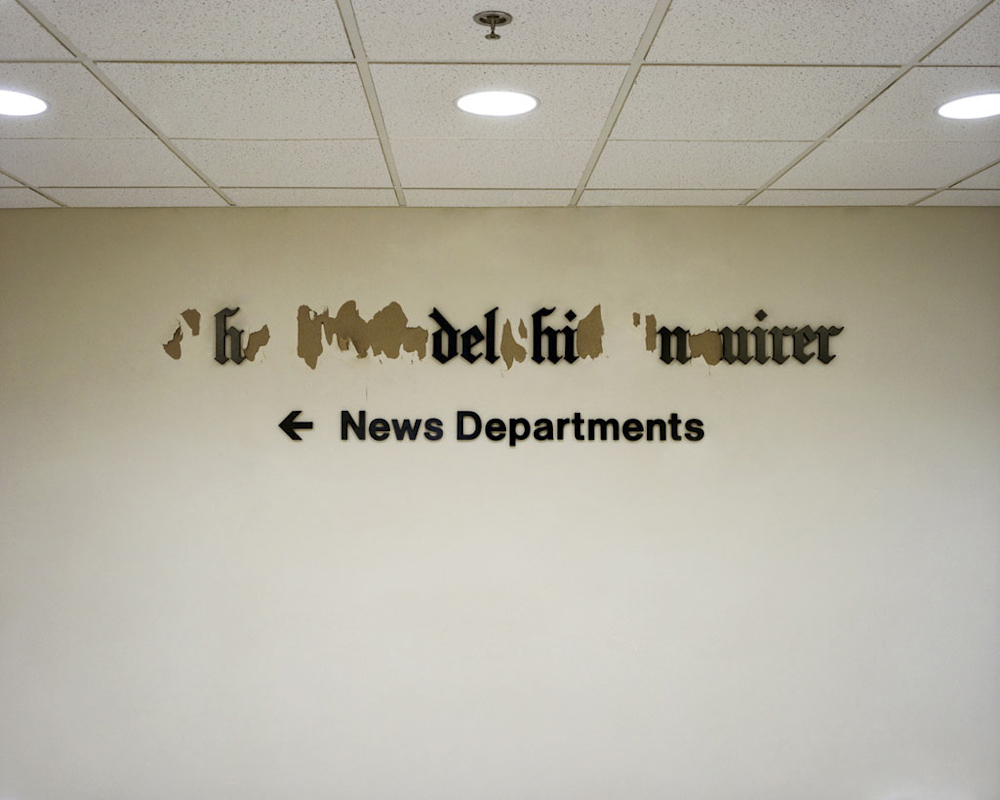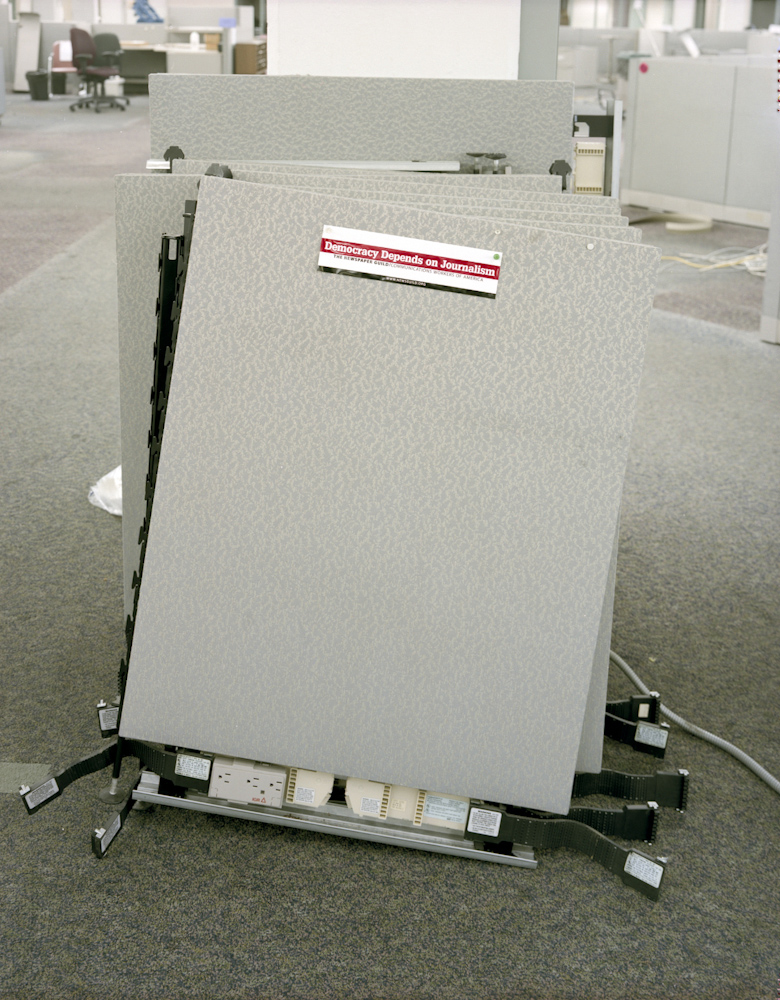Don Sapatkin, Deputy Science & Medicine Editor, 6:44pm, 2009
A1 Budget Meeting, 3:39pm, 2012
William Johnson, Advertising Sales, 3:26pm, 2011
New Orleans Clamors For Its Paper, 4:42pm, 2012
Here Today Here Tomorrow, 8:07pm, 2011
Out Of Sync Clocks, 7:24pm, 2011
Advertising Trays, 10:02pm, 2010
Buy Outs, 12:10am, 2012
No Worker Left Behind, 9:32pm, 2012
Former Staffers, 2:51pm, 2011
It’s Been Murder, 2:55pm, 2012
Kristen Graham’s Desk, 9:18pm, 2011
Madness Takes Its Toll, 4:20pm, 2011
Old Computers, 5:59pm, 2011
Newsboxes, 7:10pm, 2012
Bye Bye Broad Street, 5:16pm, 2012
Staff Who Filed The Last Edition Of Paper From Broad Street Newsroom, 11:10, 2012
Newsroom, Day After The Move, 4:21pm, 2012
Elevator Lobby, Night Of The Move, 10:43pm, 2012
Guild Sticker Left On Cubicle, 8:49am, 2012
"It used to mean something when you told people you worked at The Philadelphia Inquirer," a
reporter recently told me, “This place used to be a Pulitzer factory.” For the past four years I
have been photographing the rapid transformation of The Philadelphia Inquirer as the paper
emerges from bankruptcy and struggles to adapt to a digital era. Through a depiction of The
Inquirer’s efforts to prevail despite depleted ad revenue, a steady decline in circulation, layoffs,
buy-outs, and bankruptcy, my intent is to reveal the challenges and harsh realities that
face the newspaper industry today.
While many credit the advent of the Internet as the origin of newspapers’ current woes, the
newspaper industry has faced tremendous battles for the past quarter-century. Many
newspapers at one time were family and locally owned businesses and over the years have
been consolidated into publicly owned national chains. With this change of ownership, their
interests have, in turn, shifted away from high-end journalism to boosting profits and pleasing
shareholders—a move that has led to massive buy-outs and lay-offs in newsrooms across the
country. As a result many papers today are struggling to create a profitable platform to
disseminate both print and online news coverage. The events currently unfolding in newsrooms
like The Inquirer’s will weigh heavily on the future of journalism. By recording the everyday
moments of progression and change at The Philadelphia Inquirer, my aim is to reveal a portrait
of the evolution of the American newspaper industry within the larger context of the current
economic issues plaguing our country.
The newspaper for centuries has served as a cornerstone of American society holding our
country’s institutions, CEOs, politicians and big businesses accountable for their actions,
upholding the values, laws and morals that our democracy was founded upon. I am interested
in how the dramatic shift in technology and the dissemination of information on the Internet
will not only impact the newspaper business but American society as a whole. While the
erosion of print journalism appears inevitable, we shall see how newspapers survive the wounds
of a merciless battle into the digital era.
It seems the bloodletting of newsrooms and an industry’s fight for survival has gone widely
unnoticed by a society too immersed in their smart phone or tablet to care as in-depth news
coverage reported by professionals becomes reduced to a “breaking news” 140-characterheadline.
I am a descendant of five generations of newspaper men. My great, great, great
grandfather, Hiram Young, started the York Daily in 1870, and my father was an editor at The
Philadelphia Inquirer for 29 years until he was laid off last October in yet another round of
staff cuts. As the downward spiral of a troubled industry unravels before my eyes, it is a
matter of great personal significance. As we lose reporters, editors, newsbeats and sections of
papers, we lose coverage, information, and a connection to our cities and our society, and, in
the end, we lose ourselves.

